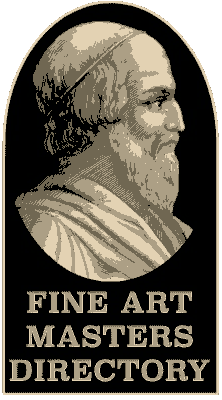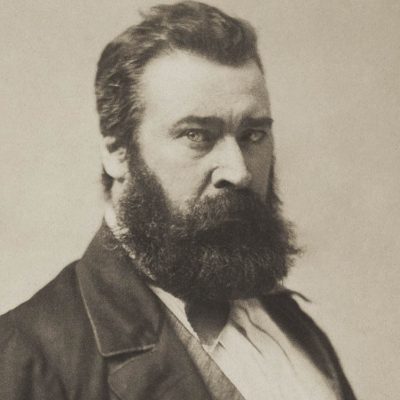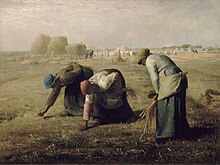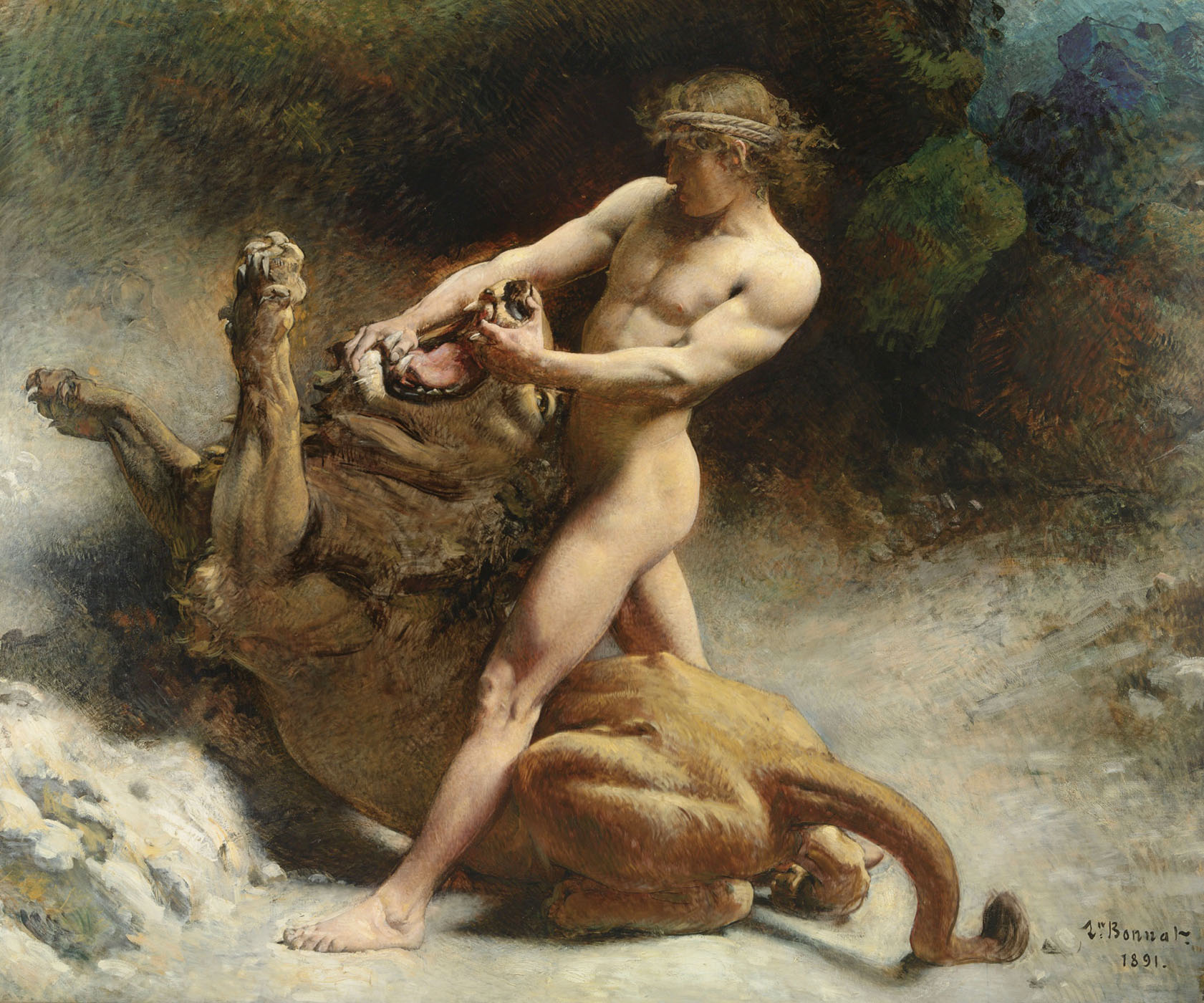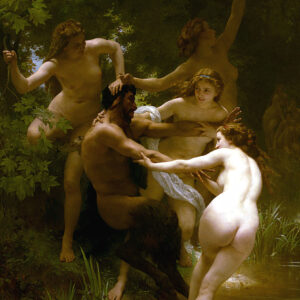Jean-François Millet (French: [milɛ]; October 4, 1814 – January 20, 1875) was a French artist and one of the founders of the Barbizon school in rural France. Millet is noted for his paintings of peasant farmers and can be categorized as part of the Realism art movement. Toward the end of his career he became increasingly interested in painting pure landscapes. He is known best for his oil paintings but is also noted for his pastels, conte crayon drawings, and etchings.
In 1849, Millet painted Harvesters, a commission for the state. In the Salon of that year, he exhibited Shepherdess Sitting at the Edge of the Forest, a very small oil painting which marked a turning away from previous idealized pastoral subjects, in favor of a more realistic and personal approach.[10] In June of that year, he settled in Barbizon with Catherine and their children.
Harvesters Resting (Ruth and Boaz), Museum of Fine Arts, Boston (1850–1853)
In 1850 Millet entered into an arrangement with Sensier, who provided the artist with materials and money in return for drawings and paintings, while Millet simultaneously was free to continue selling work to other buyers as well.[11] At that year’s Salon, he exhibited Haymakers and The Sower, his first major masterpiece and the earliest of the iconic trio of paintings that would include The Gleaners and The Angelus.[12]
From 1850 to 1853, Millet worked on Harvesters Resting (Ruth and Boaz),[13] a painting he would consider his most important, and on which he worked the longest. Conceived to rival his heroes Michelangelo and Poussin, it was also the painting that marked his transition from the depiction of symbolic imagery of peasant life to that of contemporary social conditions. It was the only painting he ever dated, and was the first work to garner him official recognition, a second-class medal at the 1853 salon.[14]
In the mid-1850s, Millet produced a small number of etchings of peasant subjects, such as Man with a Wheelbarrow (1855) and Woman Carding Wool (1855–1857).[15]
The Gleaners
The Gleaners, 1857. Musée d’Orsay, Paris.
This is one of the most well known of Millet’s paintings, The Gleaners (1857). While Millet was walking the fields around Barbizon, one theme returned to his pencil and brush for seven years—gleaning—the centuries-old right of poor women and children to remove the bits of grain left in the fields following the harvest. He found the theme an eternal one, linked to stories from the Old Testament. In 1857, he submitted the painting The Gleaners to the Salon to an unenthusiastic, even hostile, public.
(Earlier versions include a vertical composition painted in 1854, an etching of 1855–56 which directly presaged the horizontal format of the painting now in the Musée d’Orsay.[16])
A warm golden light suggests something sacred and eternal in this daily scene where the struggle to survive takes place. During his years of preparatory studies, Millet contemplated how best to convey the sense of repetition and fatigue in the peasants’ daily lives. Lines traced over each woman’s back lead to the ground and then back up in a repetitive motion identical to their unending, backbreaking labor. Along the horizon, the setting sun silhouettes the farm with its abundant stacks of grain, in contrast to the large shadowy figures in the foreground. The dark homespun dresses of the gleaners cut robust forms against the golden field, giving each woman a noble, monumental strength.
